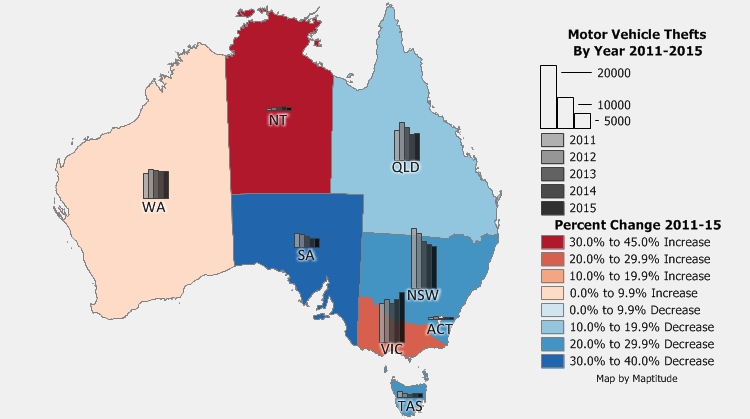Decoding Florida’s Crime Panorama: A Deep Dive into Crime Mapping and its Implications
Associated Articles: Decoding Florida’s Crime Panorama: A Deep Dive into Crime Mapping and its Implications
Introduction
On this auspicious event, we’re delighted to delve into the intriguing subject associated to Decoding Florida’s Crime Panorama: A Deep Dive into Crime Mapping and its Implications. Let’s weave fascinating data and supply recent views to the readers.
Desk of Content material
Decoding Florida’s Crime Panorama: A Deep Dive into Crime Mapping and its Implications

Florida, the Sunshine State, boasts stunning seashores, vibrant cities, and a thriving tourism business. Nonetheless, beneath the floor of this idyllic picture lies a fancy actuality mirrored in its crime statistics. Understanding the distribution and tendencies of crime throughout the state is essential for efficient regulation enforcement, group planning, and public security. This text explores the intricacies of Florida’s crime map, analyzing its information, highlighting key tendencies, and analyzing the implications for residents and guests alike.
The Information Panorama: Sources and Limitations
Florida’s crime information is primarily collected and disseminated by the Florida Division of Legislation Enforcement (FDLE). The FDLE’s Uniform Crime Reporting (UCR) system gathers information from collaborating regulation enforcement businesses throughout the state, offering a complete, albeit not solely good, image of crime occurrences. This information sometimes consists of offenses categorized into Half I (violent crimes like homicide, rape, theft, aggravated assault; and property crimes like housebreaking, larceny-theft, motorized vehicle theft, and arson) and Half II offenses (a wider vary of much less critical crimes).
A number of elements restrict the accuracy and completeness of the info offered on Florida’s crime map:
- Reporting inconsistencies: Not all crimes are reported to regulation enforcement. Underreporting, significantly for sure sorts of crimes like home violence or sexual assault, can considerably skew the info. Variations in reporting practices amongst totally different businesses additionally contribute to inconsistencies.
- Information lag: There’s typically a delay between the incidence of a criminal offense and its official reporting and inclusion within the FDLE database. Actual-time crime mapping initiatives are rising, however they do not all the time embody the total scope of reported crimes.
- Geographic limitations: The decision of crime maps can range. Whereas some maps show crime information at a granular degree (e.g., by avenue deal with), others could mixture information at a coarser degree (e.g., by census tract or zip code). This will obscure localized crime hotspots.
- Definition inconsistencies: The definition and categorization of sure crimes can range throughout jurisdictions, making direct comparisons difficult. For instance, the definition of "theft" would possibly differ barely between businesses.
Analyzing the Crime Map: Regional Variations and Developments
Florida’s crime map reveals a fancy spatial distribution of felony exercise, with important regional variations. Whereas no single space is solely resistant to crime, sure areas constantly expertise increased charges than others. Main metropolitan areas like Miami, Orlando, Jacksonville, and Tampa constantly report increased crime charges in comparison with smaller, extra rural communities. That is largely attributable to elements corresponding to inhabitants density, socioeconomic disparities, and the provision of alternatives for felony exercise.
Analyzing tendencies over time is equally essential. Whereas total crime charges could fluctuate, particular crime sorts would possibly exhibit distinct patterns. For instance, sure areas would possibly expertise surges in property crime throughout particular seasons, whereas others would possibly see spikes in violent crime associated to particular occasions or social dynamics. Analyzing these temporal tendencies permits regulation enforcement and group organizations to implement focused interventions and useful resource allocation methods.
Hotspots and Contributing Elements:
The crime map typically reveals particular "hotspots" – geographic areas with a disproportionately excessive focus of felony exercise. Understanding the underlying causes of those hotspots is essential for efficient crime prevention. Elements contributing to crime hotspots can embody:
- Socioeconomic elements: Areas with excessive poverty charges, unemployment, and lack of academic alternatives typically expertise increased crime charges. These elements can create a breeding floor for desperation and felony exercise.
- Housing circumstances: Deteriorating housing circumstances, overcrowding, and lack of enough safety measures can enhance vulnerability to crime.
- Lack of group engagement: Weak group ties and lack of engagement in crime prevention initiatives can contribute to increased crime charges.
- Drug trafficking: The presence of drug trafficking networks typically fuels different types of felony exercise, together with violence and property crime.
- Entry to firearms: Easy accessibility to firearms can exacerbate violent crime.
The Position of Know-how in Crime Mapping and Evaluation:
Know-how performs an more and more necessary function in crime mapping and evaluation. Superior Geographic Data Programs (GIS) enable regulation enforcement businesses to visualise crime information spatially, determine patterns, and predict potential future crime hotspots. Predictive policing algorithms, whereas controversial, are being utilized in some areas to allocate assets extra successfully. Actual-time crime mapping instruments, typically built-in with social media and citizen reporting platforms, can present rapid updates on ongoing incidents and help in fast response.
Nonetheless, using know-how in crime mapping raises moral concerns. Issues about algorithmic bias, privateness violations, and the potential for disproportionate focusing on of particular communities want cautious consideration. Transparency and accountability within the improvement and deployment of those applied sciences are essential to make sure their accountable use.
Implications for Residents and Guests:
Understanding Florida’s crime map has important implications for each residents and guests. Residents can use this data to make knowledgeable choices about the place to reside, work, and lift their households. By understanding the crime tendencies of their neighborhoods, they will take proactive steps to boost their private security and safety. Guests can use crime map information to plan their itineraries and select lodging in safer areas.
Nonetheless, it is necessary to keep away from overinterpreting crime map information. Crime statistics ought to be thought-about alongside different elements, corresponding to private security precautions and situational consciousness. Merely avoiding areas with excessive crime charges would not assure full security. Accountable private habits, together with being conscious of 1’s environment and avoiding dangerous conditions, is essential for private security no matter location.
Shifting Ahead: Collaboration and Neighborhood Engagement
Addressing Florida’s crime challenges requires a multi-faceted strategy involving collaboration between regulation enforcement businesses, group organizations, and authorities our bodies. Neighborhood-based crime prevention initiatives, corresponding to neighborhood watch packages and youth outreach packages, play a significant function in fostering safer communities. Investing in social companies, training, and financial improvement can deal with the foundation causes of crime and create extra resilient communities.
Transparency in crime information reporting and accessibility to crime maps are essential for empowering communities to take part in crime prevention efforts. Open dialogue about crime points, coupled with data-driven methods, can result in more practical and equitable options. By working collectively, Florida can try to create safer and extra vibrant communities for all its residents and guests. The crime map serves as a beneficial software on this ongoing effort, offering an important lens by way of which to grasp and deal with the advanced realities of crime within the Sunshine State.







Closure
Thus, we hope this text has offered beneficial insights into Decoding Florida’s Crime Panorama: A Deep Dive into Crime Mapping and its Implications. We admire your consideration to our article. See you in our subsequent article!
